Study Reveals How Florists Manage Unrealistic Brides
By Jill Brooke
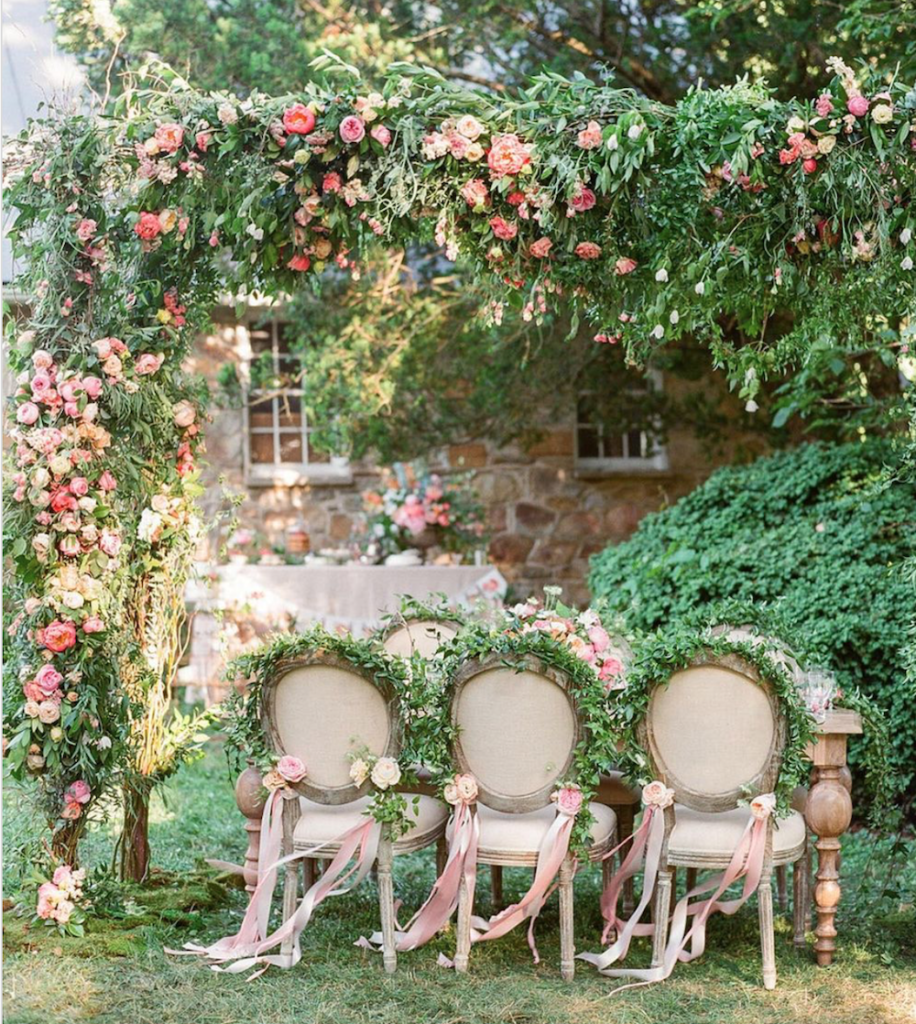
Here’s something that florists around the world are loving.
Because the pandemic has unexpectedly created so much work, florists are getting to pick and choose what weddings they want to participate in, giving them leverage unlike any time before. Now finally they can say bye-bye to the Bridezilla brides with lists a mile long who are unrealistic about the time and effort – and costs – put into floral artistry.
According to a new study conducted by Florists’ Review and Flowerpowerdaily, florists are saying no to wedding work with 30% saying they are turning down as much as 20-25% of wedding requests while 70% are turning down 10% of requests.
Theresa Colucci, an AIFD trained florist who owns upstate New York’s “Meadowscent” and whose work has been at the Philadelphia Flower Show, already has 25 weddings booked and is declining others.
“When I’m pricing a wedding, I can now price to my standards because it’s my reputation,” she says. “Florists will tell me how brides will bring a Pinterest picture about a $600 garland down a wedding table and that’s not realistic. Even greenery is expensive now. If it’s not going to be beautiful, I don’t want to accept the work since these events are so labor-intensive.”
And let’s be realistic. It’s not only the bride who is wanting an Instagram moment – the florists want and deserve one too and are enjoying working on projects that are fun for them.

“It makes me giggle when a bride now comes in with a list a mile long and they have a budget of $1500,” says Carrie Cassidy-Struble, who owns North Carolina’s popular “Flower Diva.” “I say, “Honey, that won’t even cover the bouquets and corsages.” And when you go through the consult where every other word is how much it’s going to cost, it’s a red flag and I know not to put that much effort into the proposal.” Respect for how much time the creations take for her customized services is essential for her and others okaying a project. Nor do they want their time wasted for a consultation that often takes an hour and leads nowhere. In fact, some florists are now charging fees for the consultation so their time isn’t wasted.

Part of the problem is perspective. When people visit a gallery that charges $10,000 for a painting, do they haggle over the price? No, but with florists who use branches and blooms instead of paint, clients have had no such qualms.
“When someone is hiring me, I go psychotic in planning the ratios of colors, textures, level of movement while looking at the seasonality of the available flowers as well,” says Paulina Nieliwocki of Blue Jasmine Floral. “Do they want wild, more compact, or fluffier designs? We are seeing more people understanding the artistry involved but more education is needed.” Plus those forever pictures do last forever since few are putting images of the catered food in frames.
Leatal Cohen of Brooklyn’s “Pic and Petal” says she would have taken jobs that weren’t her exact style – but not anymore. “There have been many experiences where boundary setting needed to take place, sometimes with clients expecting answers via text right away and other times with planners changing my designs in the middle of installation day,” she says. “I feel lucky to be in a place where I can comfortably pick and choose the jobs that fulfill me the most. If it has color and whimsy, it’s a go!”
She recently declined a client who gave her a picture board with all neutral colors because it didn’t feed her creative soul.
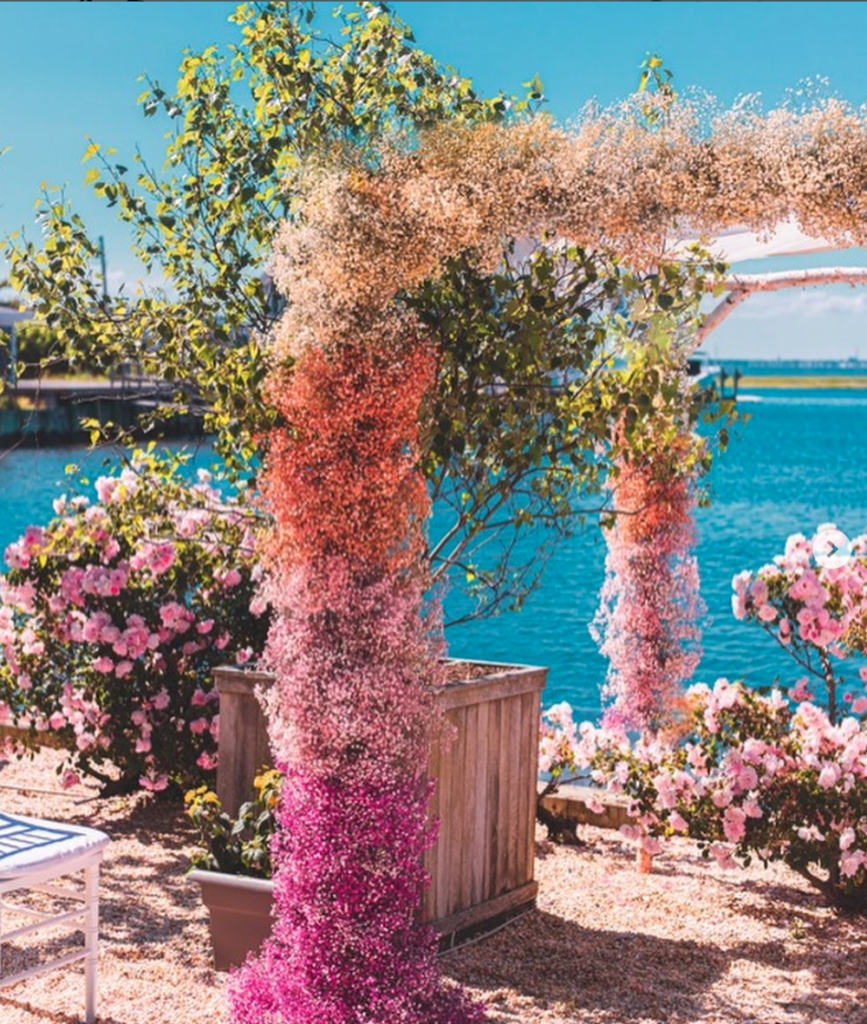
And clients who complain that flowers aren’t worth it – especially since prices have increased due to supply chain issues and congestion of rescheduled weddings – are finding that the florist doesn’t need to take that lack of appreciation for the team. After all, according to The Wedding Report, there are 2.5 million weddings expected for 2022.
The other day on Sirius radio’s “Storme Warren” radio show, co-host Macie Banks was complaining how “flowers are so expensive” for her upcoming wedding. The country music radio host shared how she had been interviewing several florists for her pending April wedding and each confirmed that the budget would be higher than she anticipated.
“Get branches instead,” chimed in Warren, before dismissively saying flowers aren’t worth the price because “they don’t last long.”
Au contraire of course.
Imagine those forever wedding portraits without flowers and anemic scraggly branches as a halo to love. It is those plump, sensual garden roses that pop in those pictures and soften and enhance the bride and groom’s picture-perfect moment. Anyone who does their homework should know that flowers represent 10% of any wedding budget – according to our survey – and are worth every penny.
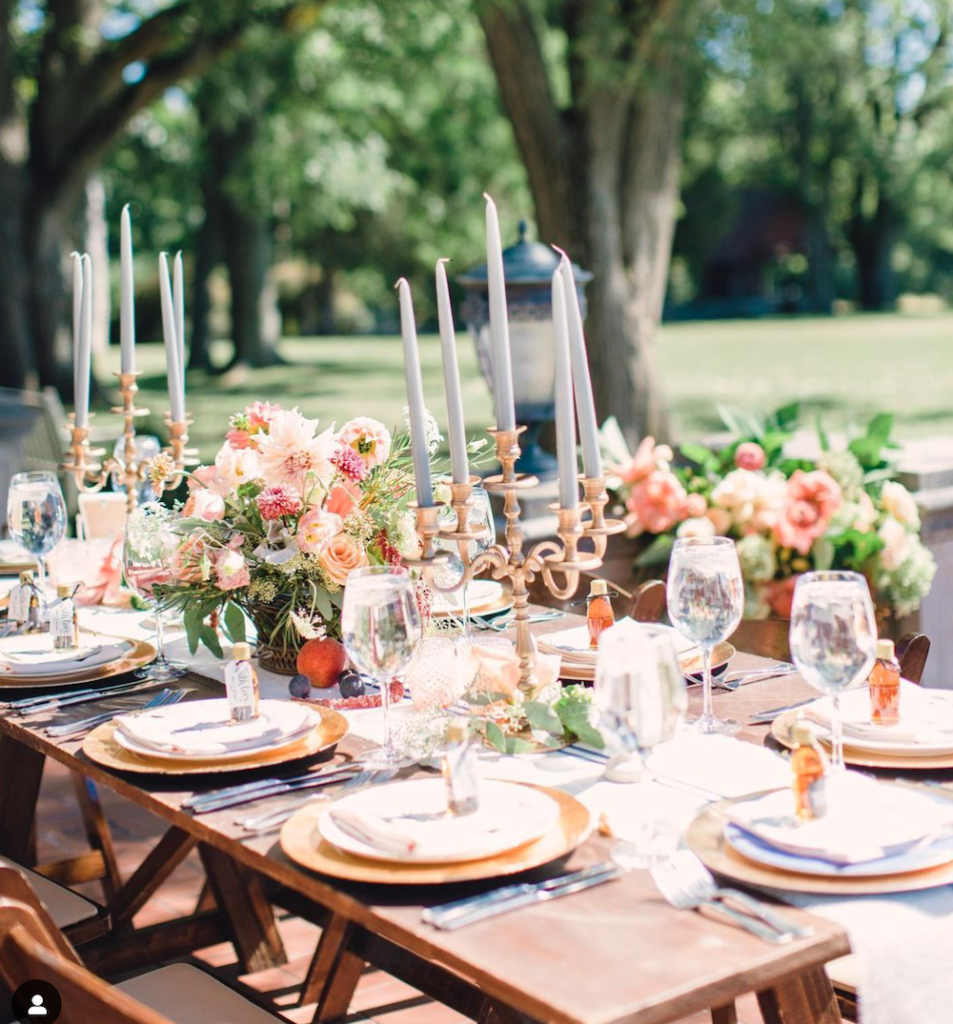
Because of supply chain issues, flower budgets from many florists are now 15% to 20% higher than before. This is why many florists are also not budging on pricing for their services and feel they can be as firm as a hydrangea stem. Furthermore, more and more florists are renegotiating previous proposals that didn’t factor in soaring flower prices and availability.
“For a white Blanca Playa rose which I like using since they open like garden roes, it has gone up from $1.97 to $2.97,” explains veteran florist Carrie Wilcox, of CW Floral Designs. “The David Austin rose or a white Tibet is even more expensive and you need hundreds to make a memorable arch. The pandemic has created so much work for florists that it’s easier for us to choose the type of clients we want. If a client just cares about the party and doesn’t appreciate what flowers and my artistry bring to the event, I know to take a pass.”
Although florists like Wilcox will say they are willing to work with a client’s budget- stretching the design concept with more inexpensive pampas grasses and eucalyptus, fern, and ruckus greenery – they need to be respected for their artistic efforts.
To say no was rare before the pandemic when wedding work – despite the stress from Bridezillas and their anxious mothers – was the bread and butter for their businesses. But because of the pandemic, millions are working from home, caring more about their environment and ordering weekly flower arrangements.
Furthermore, with travel so impacted, sending floral arrangements to celebrate birthdays and anniversaries has become a bustling business, making up for what wedding work would have been.
In the FloristsReview/Flowerpowerdaily study, although being too busy was the most cited reason for saying no to wedding clients, 6% also cited getting their weekends back.
Lori Barrett, the owner of “The Secret Garden” in Decatur, Illinois, says she has decided to not take any more wedding work. “We are no longer taking weddings as our everyday business has doubled during Covid and we have chosen to concentrate on that part of our business,” she says.
And then there is the stress – which many florists cited in the study – of finding labor to help with the weddings as well as a supply of flowers to meet the increased demand.
“We often do high-end destination weddings and supply issues for flowers is more challenging as is finding people to construct the designs for these big events,” says Bill Schaffer of Schaffer Designs, who has won numerous gold medals around the world. “But if you have treated people well over the years, they come through for you.” Furthermore, these artists creativity has found ways to offset the lack of roses by replacing the flowers with other beautiful blooms which also has value.
That is why may say that appreciation is now a must for all people working in all parts of the supply chain.
Lawrence Scott, who not only is an event planner but also a master florist, says experience now has taught him to find the grateful appreciative client.
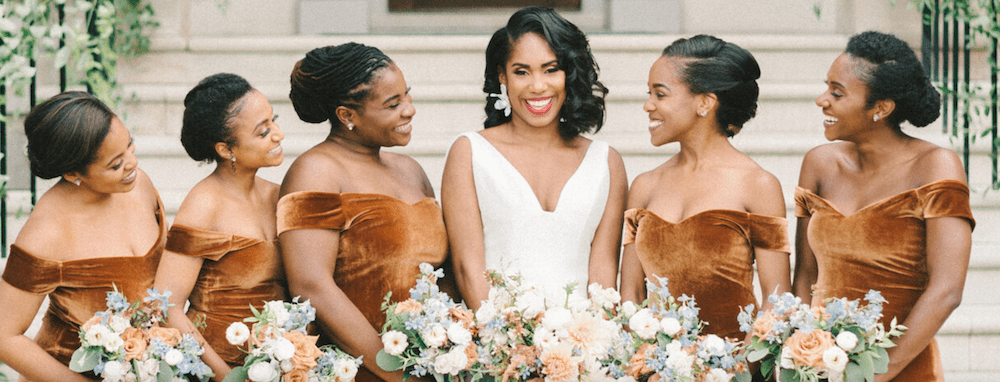
Wedding designer Holly Chapple, author of “A Life in Flowers,” says she only will design weddings where she has “a working relationship directly with the client and not just the event planner. “I’ve been doing weddings for 28 years and the payoff is the relationship and bringing a vision to life.,” she says. “There’s no more clipping of my wings in the quality of the work I want to do and have to know that the trust is there before I begin.”
Adds Anais from award-winning Aniska Creations in Florida, “This is why we are turning down 25% of potential weddings,” she says, noting that clients should understand their creative vision before asking their team to do a proposal.
“It really is about educating people now about how much work goes into creating these lifelong memories,”
Collectively, all of these issues have created a new fresh way of florists looking at their own businesses and how they price.
Nichole Wilder, owner of Wildfig Floral in Katonah, New York, explains that florists who own shops have to juggle many different types of work. For her, she prefers smaller weddings because they are more manageable and are from clients who know her creative style. “The bigger event florists can do the bigger jobs,” she says. “I love my clientele and it works for me.”
Another perk that is unexpected from the pandemic? For florists, because so many people have been ill, there’s a booming get well flower business. Studies also reveal that 73% of Americans have a higher appreciation of flowers – with Gen Y, Gen X and Baby Boomers appreciation 76, 73 and 72%.
All these developments have created a rare opportunity for florists to expand their creative visions and enhance the artistry of floral design.
As Carrie Wilcox says, “it feels good to be appreciated and paid for all our efforts. You gotta love that.”
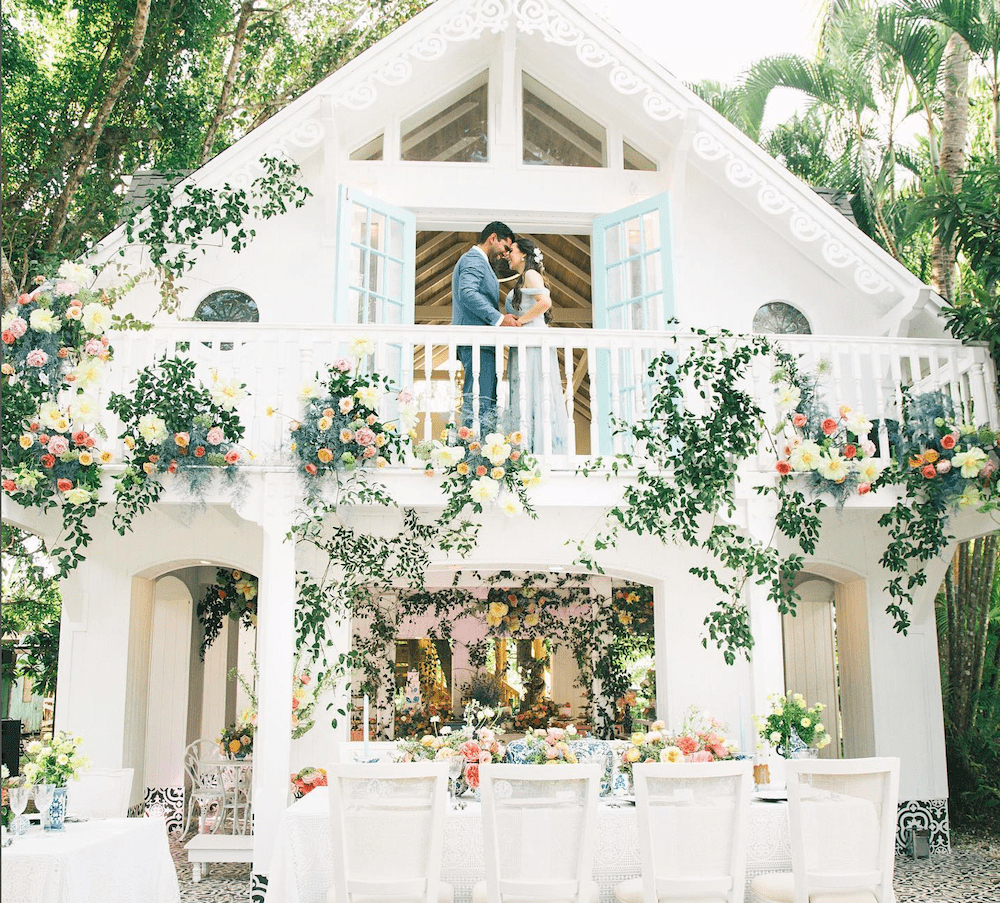
Jill Brooke is a former CNN correspondent, Post columnist and editor-in-chief of Avenue and Travel Savvy magazine. She is an author and the editorial director of FPD and floral editor for aspire design and home magazine and contributor to Florists Review magazine.
Lead Photo: Holly Chapple, “A Life in Flowers”
